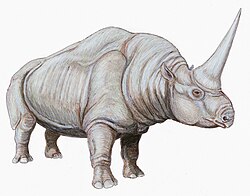You can help expand this article with text translated from the corresponding article in German. (June 2022)Click [show] for important translation instructions.
|
| Eurohippus | |
|---|---|
 | |
| E. messelensis fossil with fetus (encircled) | |
| Scientific classification | |
| Kingdom: | Animalia |
| Phylum: | Chordata |
| Class: | Mammalia |
| Order: | Perissodactyla |
| Family: | † Palaeotheriidae |
| Subfamily: | † Pachynolophinae |
| Genus: | † Eurohippus Franzen, 2006 |
| Type species | |
| †Lophiodon parvulus Laurillard, 1849 | |
| Species | |
| |
| Synonyms | |
| |
Eurohippus is an extinct genus of equoid ungulate. [1] Its species were long considered part of Propalaeotherium and Lophiotherium. [2] A pregnant specimen was described in 2015. [3] [4]








